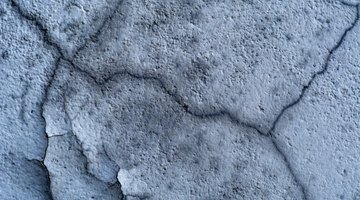How to Remove Drylok
Drylok masonry sealant is commonly used to waterproof cracks in basement walls and floors. If you need to remove this heavy-duty coating, made by United Gilsonite Laboratories and often marketed as UGL Latex, you'll need the right solvent and a pressure washer powerful enough to blast away old layers of coatings.

Drylok masonry sealant is commonly used to waterproof cracks in basement walls and floors. If you need to remove this heavy-duty coating, made by United Gilsonite Laboratories and often marketed as UGL Latex, you'll need the right solvent and a pressure washer powerful enough to blast away old layers of coatings. This combination, along with a little elbow grease, should strip old layers of Drylok in order to seal an old crack even better.
Things You Will Need
- Pressure washer (3,000 psi or better)
- Large paintbrush
- Scraper/sharp putty knife
- Sander with medium grit attachment (if possible)
- Detergent
- Industrial-strength paint remover
- Rubber gloves and safety goggles
Tip
It may take a half-dozen applications of solvent to clear away the paint, grime and sealants used on a particular surface. Or, it could take just one, depending on the power of your pressure washer, sander and chemical stripper.
-
Purchase the right industrial-grade solvent for Drylok removal. Drylok's patented latex formula makes it resistant to many common paint-removing solvents.
-
Put on your gloves and goggles before you begin. Drylok solvent contains compounds that could damage your skin or eyes.
-
Brush on your solvent to completely coat the Drylok. Let it sit for the time recommended on the container, typically at least 45 minutes.
-
Turn on your pressure washer after the solvent soaking and see what can be sprayed away at top pressure.
-
Use a sander to make tough areas more porous before trying a second coating.
-
Use a sharp putty knife to help break up large swaths of Drylok.
-
Brush on another coating of solvent and let it sit for 45 minutes before attacking the Drylok again with the pressure washer.
The Drip Cap
- Drylok masonry sealant is commonly used to waterproof cracks in basement walls and floors.
- This combination, along with a little elbow grease, should strip old layers of Drylok in order to seal an old crack even better.
Writer Bio
Dan Harkins has been a full-time journalist since 1997. Prior to working in the alternative press, he served as a staff writer and editor for daily publications such as the "St. Petersburg Times" and "Elyria Chronicle-Telegram." Harkins holds a Bachelor of Arts in journalism from the University of South Florida.
Photo Credits
- Medioimages/Photodisc/Photodisc/Getty Images
- Medioimages/Photodisc/Photodisc/Getty Images
More Articles



